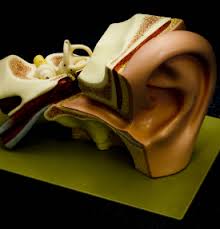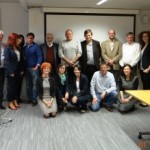Breach of duty in historic hearing loss cases – adverse inferences
Case Background
Keefe -v- Isle of Man Steam Packet Company Limited [2010] EWCA Civ 683
Shawe-Lincoln -v- Dr. Arul Chezhayan Neelakandan [2012] EWHC 1150 (QB)
Heavey -v- TMD Friction Limited, Wakefield County Court, 25th October 2012, HHJ Cockcroft, Lawtel report 14 November 2013.
Contributor Comments
All of these cases concern the difficulties faced by Claimants in proving breach of duty due to excessive noise, often from many years ago, and by Defendants in defending the same issue.
In Keefe, the deceased (the claim was brought by his widow) worked in the galley of a sea going ferry between Heysham in Lancashire and the Isle of Man from 1978 and June 1998. The deceased (ante mortem) contended that he was exposed to noise from vehicles being driven onto and off the Ro-Ro ferry on which he worked and from the galley. Two of the deceased’s shipmates corroborated the deceased’s account that it was noisy in the galley. Specifically, one witness said that it was necessary to shout or augment oral communication with hand signals.
The trial judge dismissed the claim because the Claimant had not proved that the deceased was exposed to daily average noise levels in excess of the relevant daily limits (90dB(A) LEp,d before 1st January 1990, 85dB(A) LEp,d thereafter). Specifically, he recorded that the lay evidence did not show that the daily average noise levels exceeded those limits and that the disclosure from the Defendant did not assist him in reaching such a conclusion as the Defendant had not recorded the noise levels in the galley.
However, the trial judge’s decision was reversed on appeal. In particular, the Court of Appeal (Longmore LJ) held that:
- the Defendant was subject to a duty to measure noise levels where the deceased’s exposure was likely to exceed the relevant limits (based on the Code of Practice for the Reduction of the Exposure of Employed Persons to Noise 1972);
- the Defendant’s failure to record the noise levels was in breach of that duty, especially where there was ‘colloquial’ evidence (that is, lay evidence) that suggested that such levels may have been exceeded (paragraph 18);
- accordingly, “any difficulty of proof for the Claimant has been caused by the Defendant’s breach of duty in failing to take any measurements” (paragraph 18);
- “If it is a defendant’s duty to measure noise levels in places where his employees work and he does not do so, it hardly lies in his mouth to assert that the noise levels were not, in fact, excessive.” His Lordship relied on the principle that where a party can adduce evidence to rebut a fact and fails to do so, an adverse finding can be made by the court (see British Railways Board -v- Herrington [1972] AC 877); and
- “In such circumstances the court should judge a claimant’s evidence benevolently and the defendant’s evidence critically.” (paragraph 19)
However, the ambit of this case appears to be misunderstood (or, at least, wrongly cited). To imply that where a Defendant does not have records regarding the noise levels in question, then the court should view the Defendant’s evidence critically and that of the Claimant benevolently. This misapplication often arises in historic cases, in which the Defendant’s inability to adduce evidence regarding noise levels has been caused by long delay since the cause of action accrued or other factors such as the destruction of historic records.
This misunderstanding ignores the important qualification set out in the numbered list above at 1 and 2. Specifically, the court may draw an adverse inference from the Defendant’s failure to record noise levels if that failure can be proven to be in breach of its duty of care. Not in circumstances in which records that are likely to have existed have been destroyed or lost due to the passage of time, lost through the dissolution of the company or for some other ‘innocent’ reason.
In clinical negligence, an attempt was made to misapply Keefe to urge a court to draw an adverse inference (and effectively to reverse the burden of proof) in Shawe-Lincoln v Dr. Arul Chezhayan Neelakandan [2012] EWHC 1150 (QB) in which the Claimant sought to utilise the Defendant’s failure to take a full note to reverse the burden of proof regarding delay in diagnosis and treatment (paragraphs 79 to 82). Claimant’s Counsel correctly conceded that there was very little evidence to support his case on deterioration. The trial judge, Mr Justice Lloyd Jones, held that even adopting a benevolent approach to the evidence relied on by the Claimant, that evidence did not discharge the burden of proof. Simply put, the Defendant’s admitted negligence in taking a full note did not reverse the burden of proof, nor enable the court to make findings that were not grounded in the evidence relied upon. (It is of note that the judge held that the principle in Keefe was not limited to occupational disease cases.)
In Heavey -v- TMD Friction Limited, the Claimant failed to adduce any engineering evidence at trial and sought to rely upon the (misapplication of the) principle in Keefe to argue that, in the absence of noise measurement records, it was probably noisy. In fact, the learned judge correctly held that in order to bring the case within the ambit of Keefe (as set out above in the numbered list), the Claimant would need to show that the noise levels to which he was exposed were likely to have exceeded 90dB(A) LEp,d at the relevant times. Specifically, His Honour Judge Cockcroft said (at paragraph 24):
“in Keefe, it is apparent from the transcript that there was some expert evidence that, based upon the anecdotal evidence given about sign language and hand signals for communication at a distance of 10 feet or so, an inference could be drawn that noise levels were at or about 90 decibels, and that such levels were maintained for eight hours or more in a 16 hour shift. Here, there is no such evidence. I find it quite impossible, in the circumstances, to make any safe and proper inferences about decibel levels reached at the claimant’s workplace, or the length of time the highest level of noise was maintained, with obvious implications when I come to consider liability.”
In extremis, if His Honour Judge Cockcroft was wrong to limit the application of Keefe and it was not necessary for the Claimant to discharge the burden of proof, the principle would have its widest application in quiet environments where the Defendant did not measure noise levels because it simply was not noisy (thus the duty to measure was not ‘triggered’ by paragraph 5.1 of the Code of Practice or Regulation 4 (1) of the Noise at Work Regulations 1989).
Summary
The burden remains on the Claimant to prove, in rudimentary terms but nevertheless on the balance of probabilities, that he was exposed to noise levels that were in breach of duty before Keefe applies (to bring the case within the ambit of the principle). Keefe only then permits a court to make an adverse finding where proving to what extent the noise levels exceed the relevant limits (such as where specialist machinery or circumstances exist) in the absence of noise surveys or engineering evidence (which would be based on such measurements anyway). It does not reverse the burden of proof nor does it relieve the Claimant of the duty of discharging his evidential burden. The cases to which Keefe assists the Claimant are likely to be limited.
DOUG R. COOPER
St Johns Buildings



